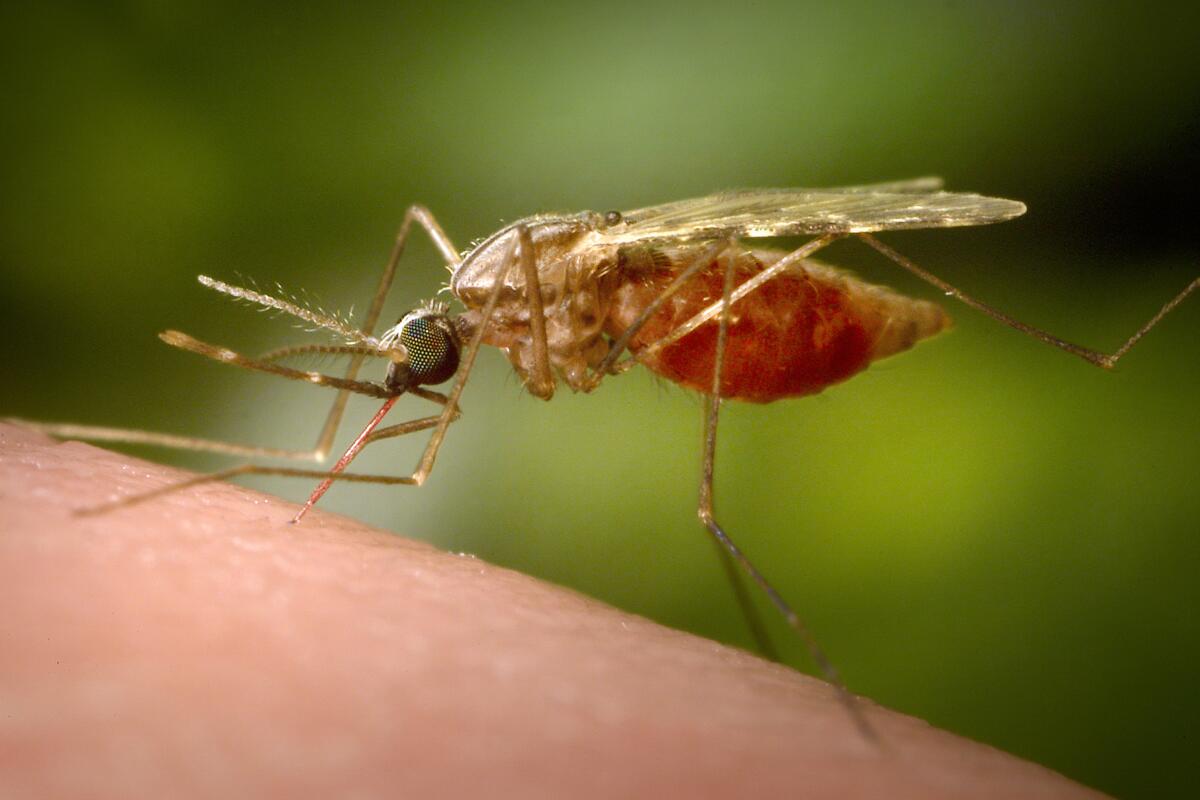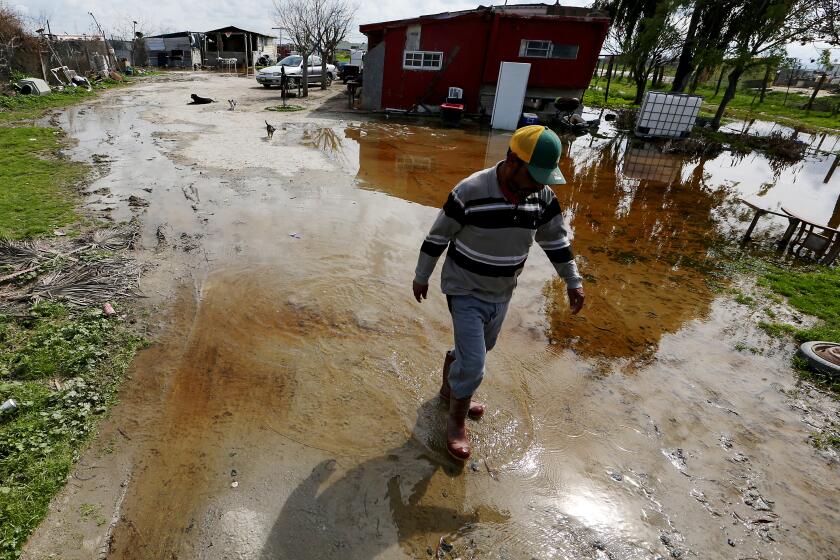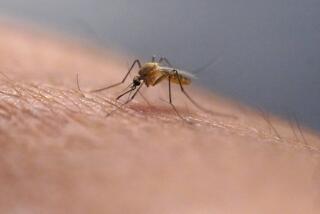Opinion: Don’t panic over malaria in the U.S. But do worry about mosquitoes

Since May, at least eight cases of locally transmitted malaria have been reported — the first such instances in the United States in 20 years. Although a relatively small number of U.S. residents contract malaria abroad each year, the individuals recently affected in Texas and Florida did not leave their states before falling ill, suggesting they got sick from mosquitoes in this country.
As a result, officials at the Centers for Disease Control and Prevention and state health departments issued alerts to notify doctors and the public. Since the cases in Florida and Texas appear not to be connected, they are unlikely to pose a threat of a larger outbreak around the country. There’s no need for alarm — at least not right now.
But in the long term, mosquitoes deserve our attention. These malaria cases could be harbingers of climate change-related alteration in mosquito habitats that reshape the geography of human disease and could hinder decades’ worth of progress in fighting mosquito-borne diseases in the U.S.
The return of pleasant weather could bring more than suntans as the deluge of storms has provided fertile ground for mosquitoes.
Mosquitoes have been dubbed the world’s deadliest animal. The flying pests are responsible for more than 400,000 deaths a year from diseases including malaria, dengue and yellow fever. With global climate change, more areas — even those away from the equator or at relatively high elevations — are becoming hospitable to mosquitoes. Parasites and viruses carried by these insects thus become more likely to be transmitted to humans.
Similarly, humans are increasingly encroaching on territories such as rain forests that are inhabited by disease-transmitting animals including mosquitoes and bats. This pattern further raises the chances that new pathogens will reach humans and that we’ll see outbreaks of older pathogens in places that had previously prevented or controlled them.
A groundbreaking study published last year and led by scientists at Georgetown University estimated how climate change and resulting shifts in land use will affect the spillover of viruses from one species to another through 2070. The study predicts that as species gather in new combinations “at high elevations, in biodiversity hotspots, and in areas of high human population density in Asia and Africa,” that movement will lead to “cross-species transmission of their associated viruses an estimated 4,000 times.”
Irrigated landscaping is one big mosquito breeding ground. Replace it with drought-tolerant native plants that aren’t so thirsty.
It will be a failure of our collective imagination if we do not prepare for emerging and re-emerging infections. Fortunately, there are ways we can prepare and mitigate the effects.
For starters, continuing to reduce greenhouse gas emissions and other drivers of global climate change will make a difference, even though it is too late to rely only on prevention strategies. Keeping the warming as minimal as possible will still reduce the movement of disease-carriers such as mosquitoes and dangerous human contact with them.
We also could be doing more about known disease threats including malaria. Two safe and effective vaccines are already available and are currently recommended in Ghana, Kenya, Malawi and other countries where this parasitic disease is endemic. Ensuring that these vaccines — and the next generation of even more effective options — are introduced in all countries with a significant burden of malaria will reduce the risk everywhere, including in the U.S.
For more novel disease threats, awareness is essential. Investing in a modern epidemiological surveillance infrastructure around the world will give us precious lead time to predict, detect and track emerging outbreaks. This means upgrading laboratory capacity, particularly in high-risk geographic regions, and public health data systems globally.
Our warming world means billowing fires, breaking glaciers — and deadlier diseases.
We also should invest in vaccines and countermeasures against diseases that could be a threat in the future, not only those that cause significant death and disability now. One such effort to stay ahead of pathogens is the Coalition for Epidemic Preparedness Innovations, launched in 2017 with an initial investment of $460 million by the governments of Japan, Norway and Germany as well as the Wellcome Trust and Bill & Melinda Gates Foundation. Other countries have joined this coalition, and after sitting on the sidelines for several years, the U.S. government finally started providing financial support to this initiative in 2022.
By conducting proof-of-concept and safety testing and establishing vaccine stockpiles before epidemics take off, such initiatives do the crucial work of ensuring that vaccines and drugs against emerging pathogens are ready for deployment.
Malaria cases popping up in Texas and Florida do not portend a new mass outbreak. But rising temperatures and changing land use do mean new footholds for infectious foes new and old. We ignore them at our peril.
Saad B. Omer is the founding dean of the Peter O’Donnell Jr. School of Public Health at UT Southwestern. The opinions expressed are entirely his own. Threads: @saad.b.omer.
More to Read
A cure for the common opinion
Get thought-provoking perspectives with our weekly newsletter.
You may occasionally receive promotional content from the Los Angeles Times.













